Apologies for such a late post on my trip to NixCon back in September, but my life has recently been overtaken by events.
The annual Nix conference was held at the Ostschweizer Fachhochschule (OST) in Rapperswil-Jona, Switzerland on 5-7 September. Rapperswill is about a 20 to 30 minute drive south of Zürich.
I had been to Switzerland a couple of times before but always on the Geneva side, so I was looking forward to the Alpine scenery of Zürich. I had some adventures getting there and back, but I managed to arrive in the morning of Thursday, 6 September. I met up with my friend Ross Turk who was there representing Flox (one of the main sponsors of NixCon) and we shared a car to the hotel.

I knew I was going to like it when I saw this cool old car on the highway. I have no idea what type of car it is, though.
When Ross and I got to the hotel, none of our rooms were ready, so we sat around a chatted for about an hour or so. Once we got our keys it was time for me to go to bed for a few hours.
My trick for avoiding jet lag when heading east is to get to the hotel (usually early to mid-morning), nap until about 4pm, get up, shower and then stay up until 10pm or so. If I can managed that I’m good to go for the rest of the trip.
One of the things I was looking forward to with NixCon was going to an open source conference that was more grassroots than my normal shows of late. In my current job at AWS I work mainly with larger open source companies, some with billion dollar market capitalization, but throughout most of my career I was involved in open source at a much lower level.
I miss that.
NixCon was held at the OST which is a university for applied sciences. The space was donated, which is much different than, say, attending a conference at a convention center. You can almost always rely on fast networking speeds at universities, there are plenty of rooms for sessions, and, surprisingly, the cafeteria served very good food.
I was at NixCon for a couple of reasons. First was to get a better understanding of Nix and NixOS and how they are related. The second is that AWS sponsors the cloud resources for the Nix binary cache. And finally I just wanted to interact with a fast growing and vibrant community.
Almost 500 people attended the conference, which is a more than double last year’s conference, reflecting a lot on how quickly this community is growing.
The conference kicked off Friday morning. Even with a bit of rain turnout was pretty solid, with the registration desk seeing a lot of traffic.
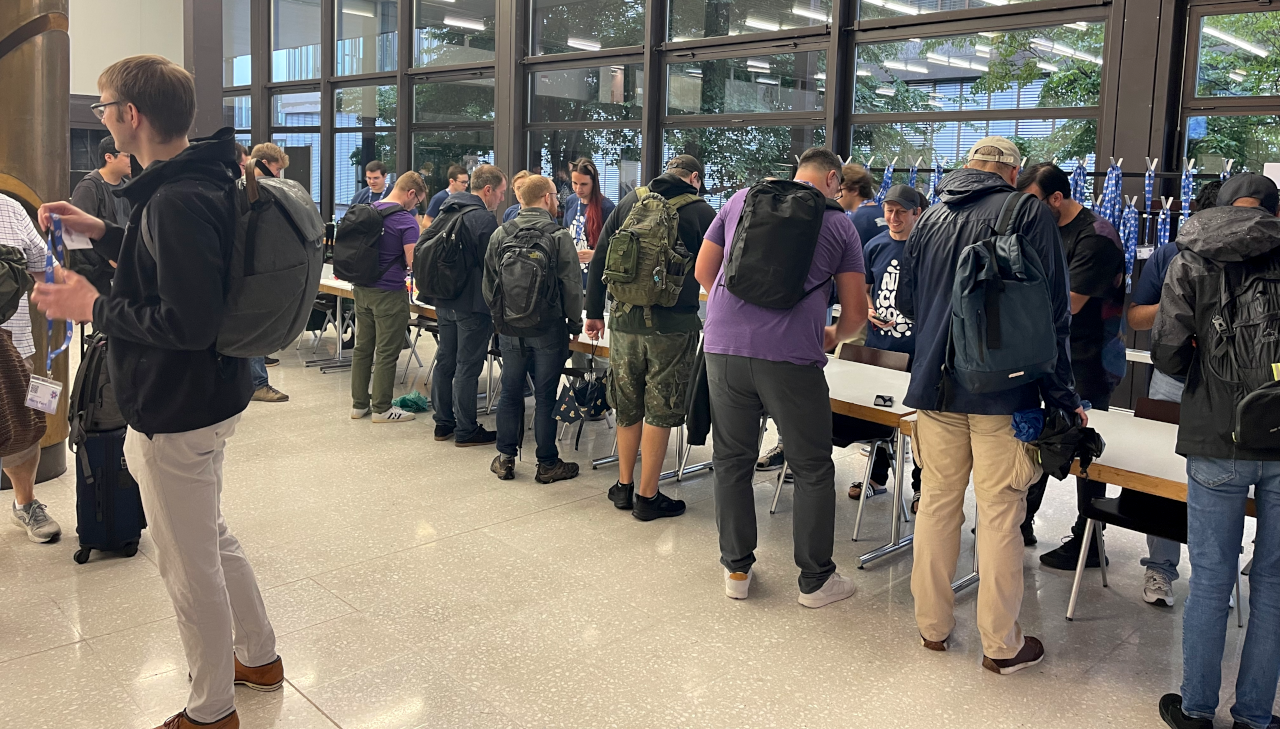
NixCon is a two-track conference that also has workshops in the afternoon. The opening session was given by Dr. Farhad Mehta who was the OST professor who sponsored the venue for NixCon.
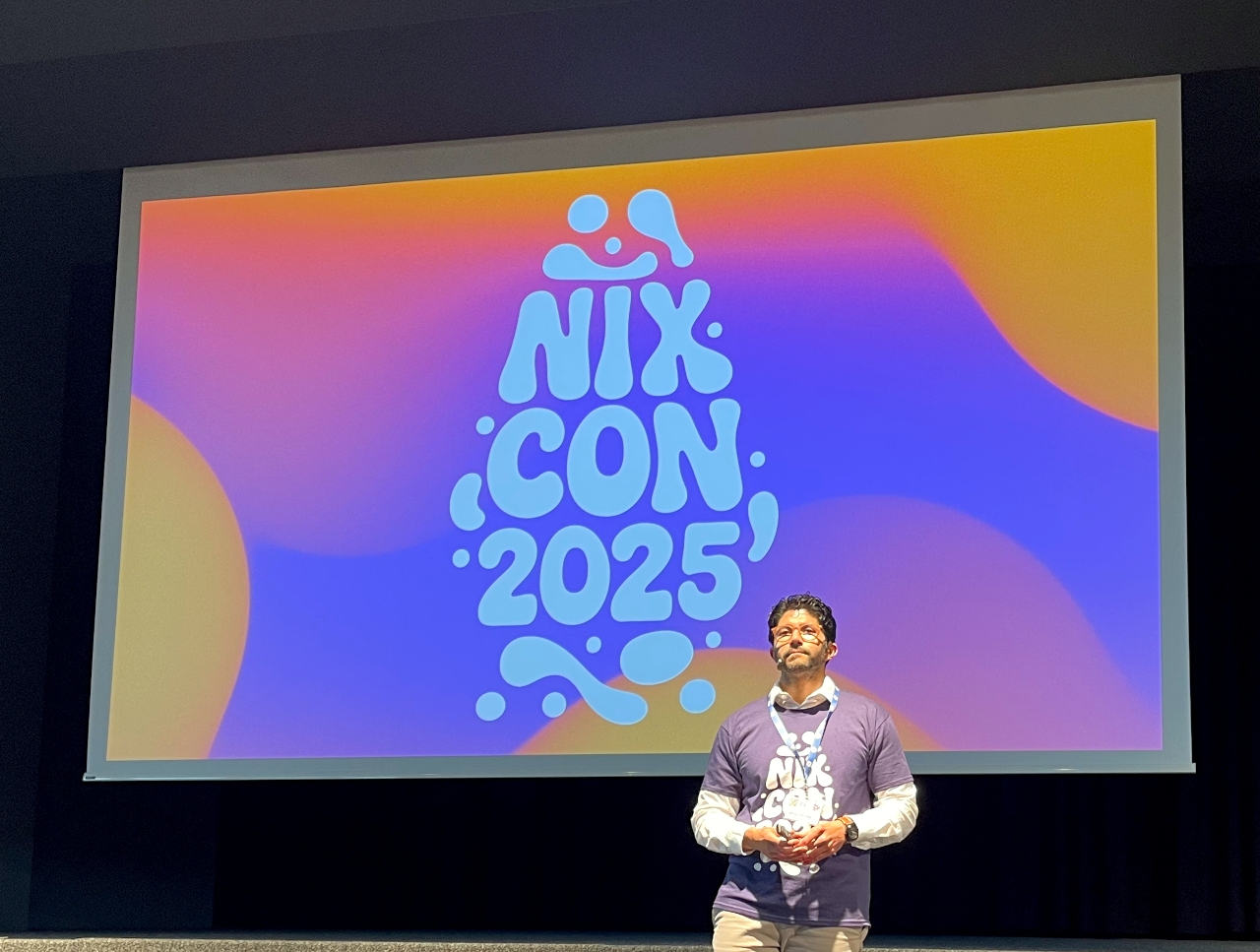
After Farhad did the usual introductions and housekeeping, we got to hear from Peter Kistier.
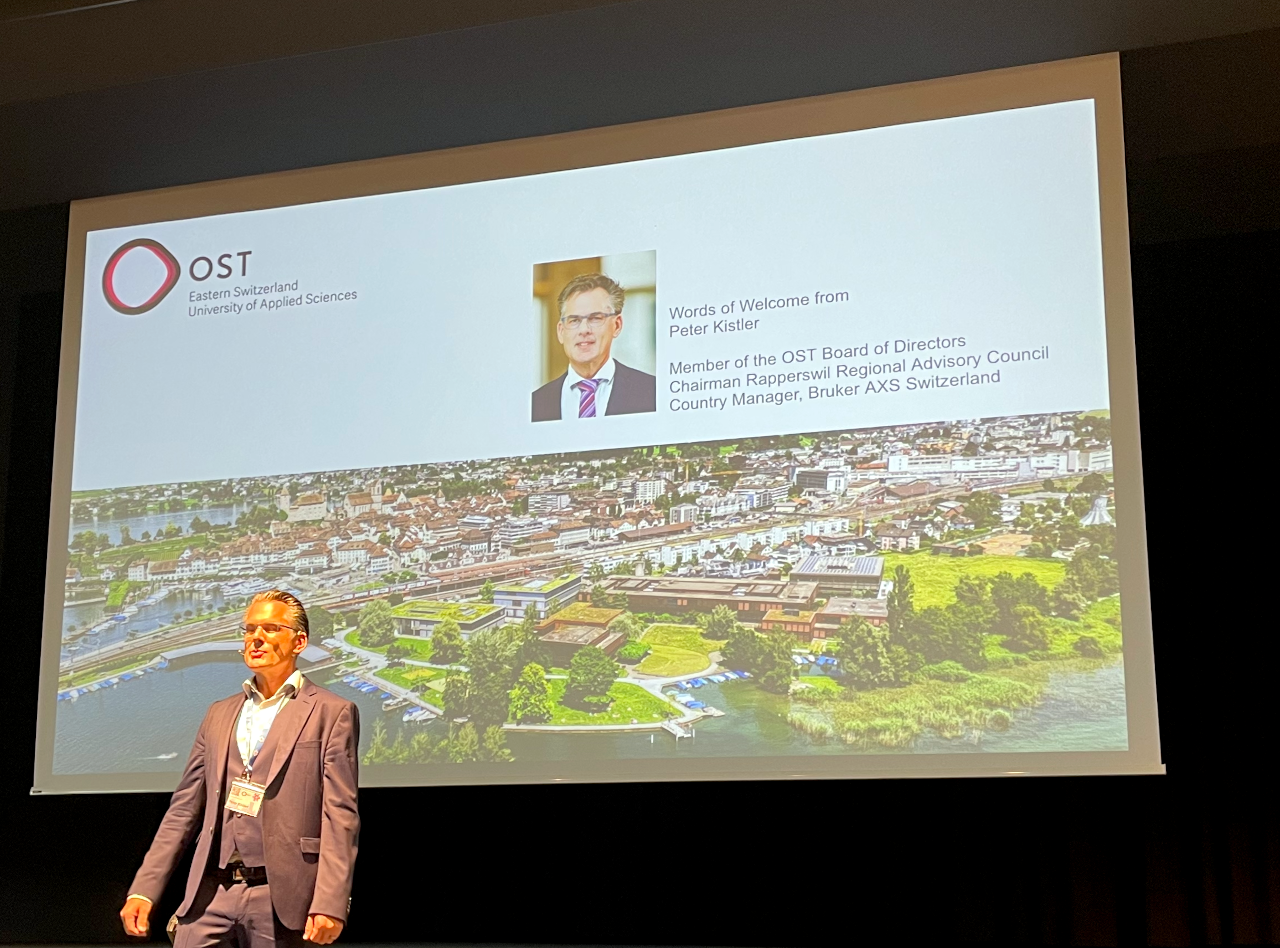
Peter is a member of the Board for the OST, and he stressed the importance of a technical education and the large role played by open source.
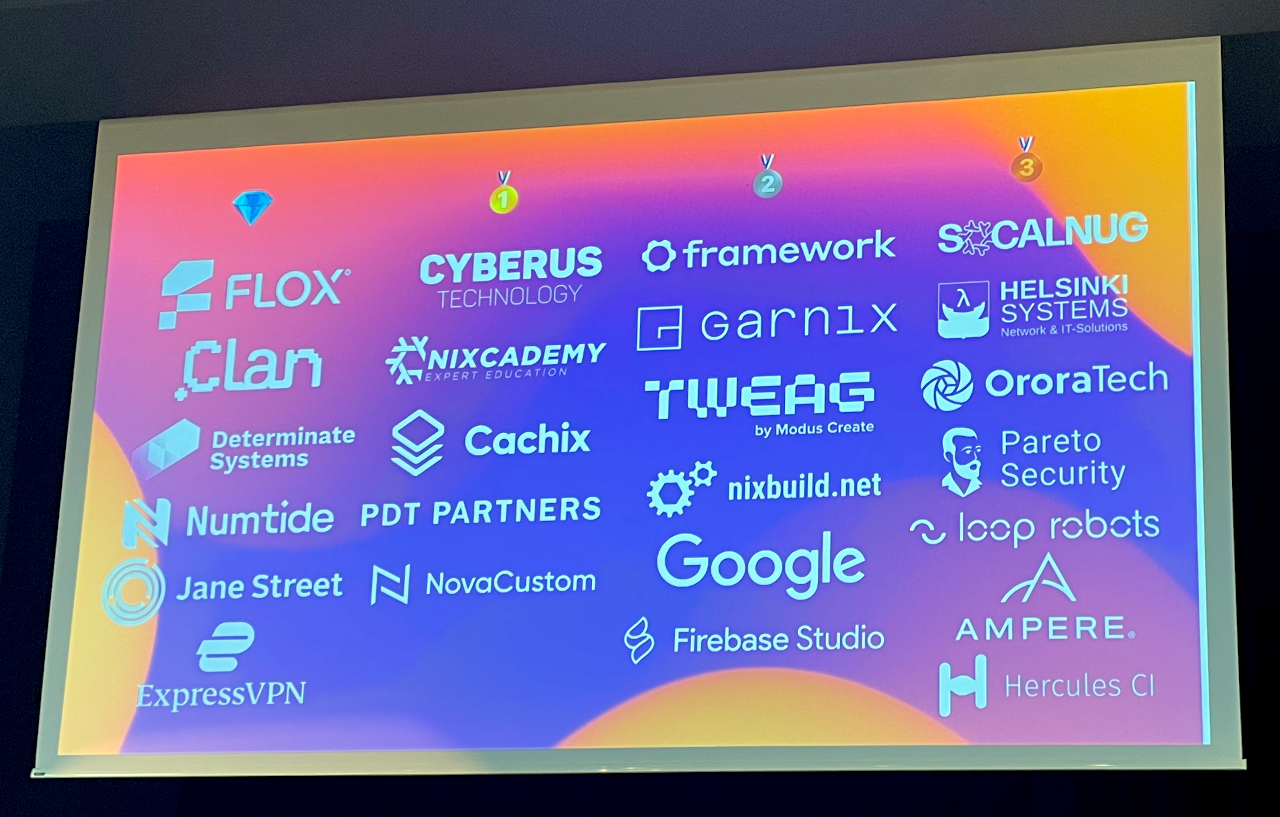
This was followed by presentations from each of the Diamond Sponsors.
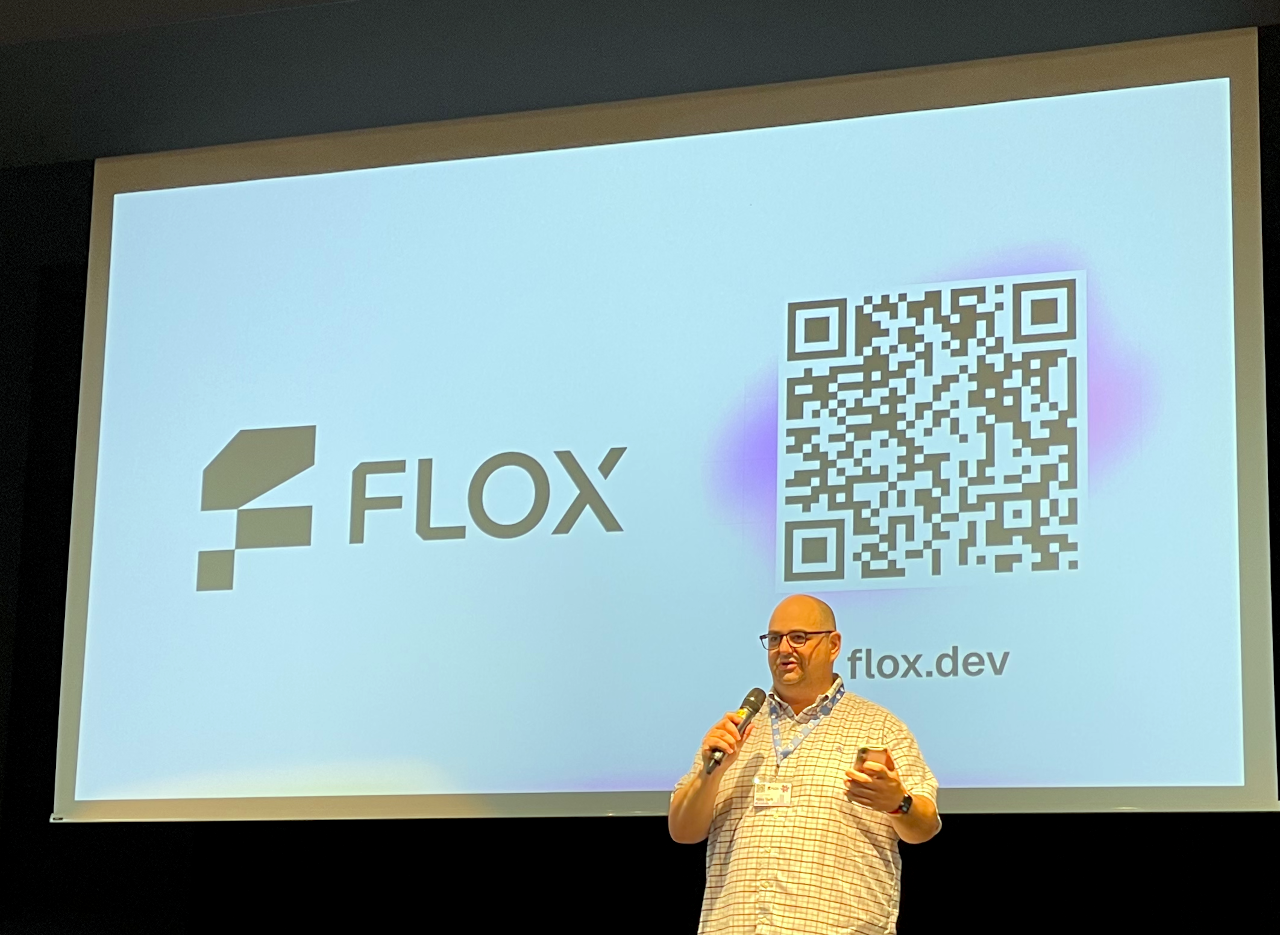
Ross did a good job talking about Flox. In trying to distill how to make money with free software, I’ve found that people will pay for three things: simplicity, security and stability. If you are a commercial open source company and can provide one, two, or all three things you should be able to find customers. It is another thing to remember that your open source community isn’t always the best source for those customers, as they can often manage on their own. A good open source business will bring the benefits of the project to people outside of the community (but then, by doing so, you also bring them into the community). This was, in short, what Ross talked about.
While I love going to conferences to learn through the sessions, my favorite part is always the “hallway track”. I had so many amazing conversations with new friends.
In order to make interactions with previous strangers easier, the conference introduced the Bee Game.

Alex (@ners) brought in a large plush toy bee. The object of the game was to get as many points as possible by exchanging the bee. The winner gets to keep the toy.
I thought it was a cool idea. I assume the code is available somewhere if people want to replicate it (I can imagine a “pass the chameleon” game at a SUSE conference) but I can’t seem to find it. If one of my three readers let’s me know the URL I’ll update this post.
While I am new to Nix, I am impressed at how well the project is organized. There are two main governing bodies: the Steering Committee and the Foundation Board. The Steering Committee focuses on the project and code (technical stuff), while the Board focuses on keep the lights on and making them shine brighter (administration stuff).
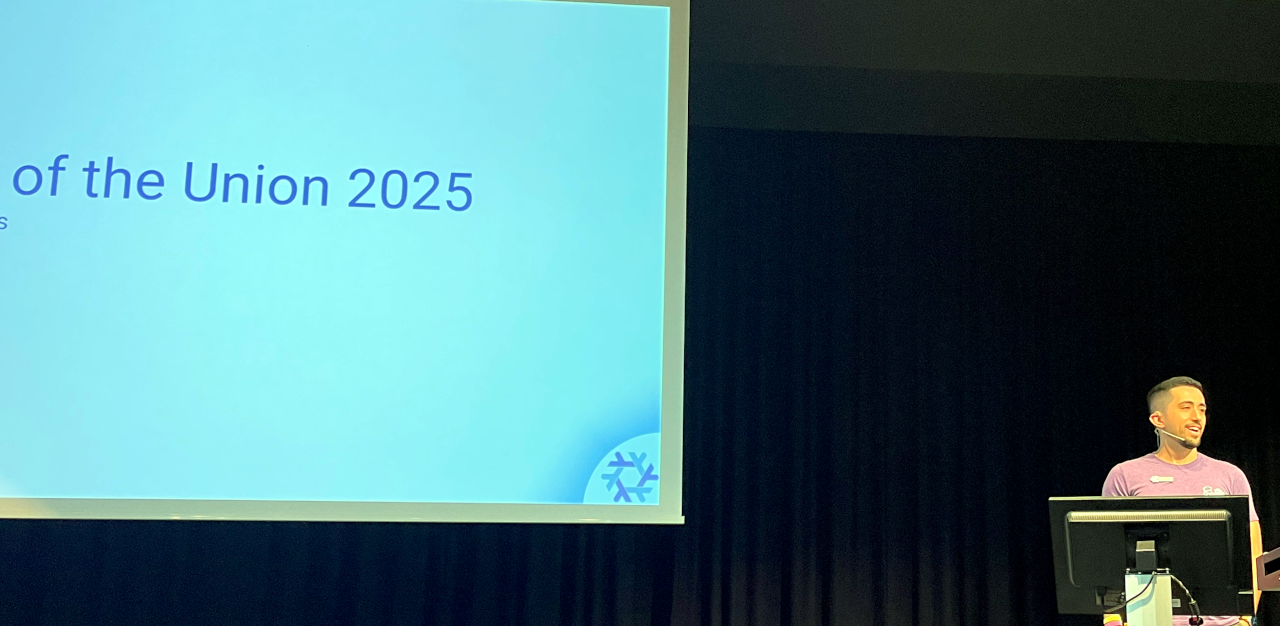
Ron Efroni, a founder of Flox and the president of the Board, gave a “State of the Union” talk aimed at a self-sustainable Nix. Part of that talk covered the Nix binary cache. The cache is at the heart of the Nix project, as that is where most users get trusted binaries. Weekly traffic is nearly 1 petabyte with AWS users making up about 35% of that total. That is an impressive amount of traffic, and it continues to grow.
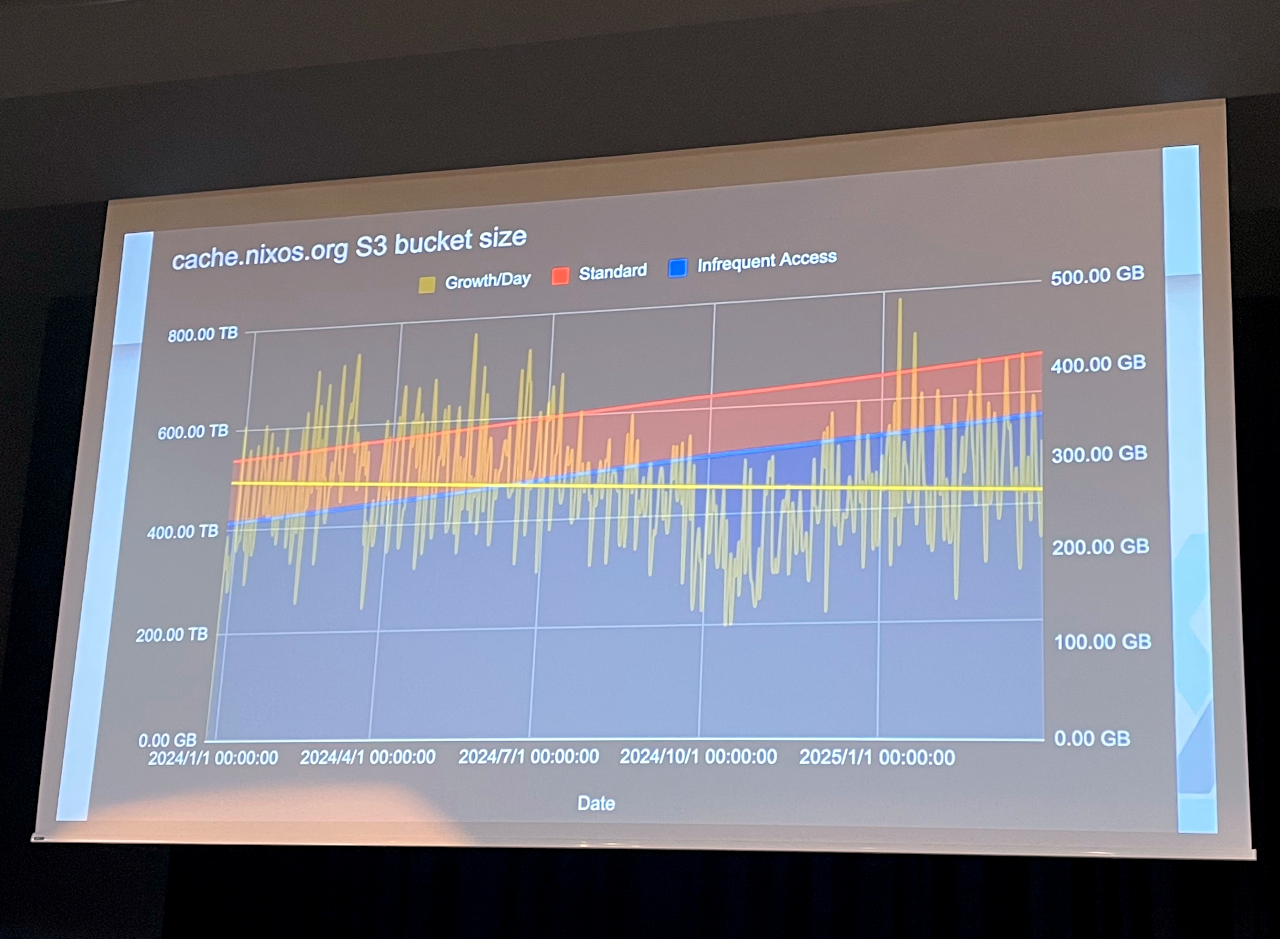
I was there to learn about Nix and I must say it was like drinking from a firehose. There were so many good talks but a lot of it went over my head.
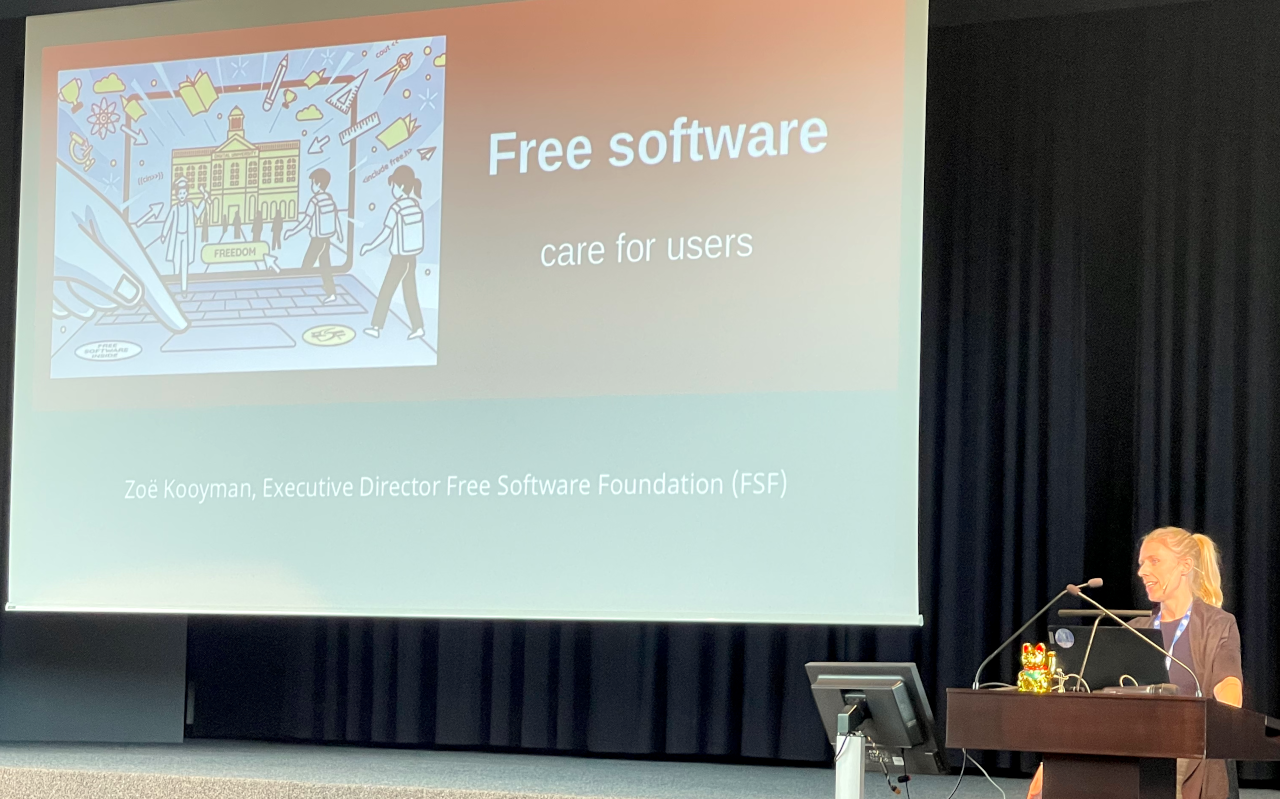
One non-Nix-centric talk was given by Zoë Kooyman, who is the Executive Director of the Free Software Foundation (FSF).
Now I wish I could have paid more attention during this talk as I am sympathetic to a number of things the FSF is concerned about, but the fact that Richard Stallman is still involved with the FSF just causes my mind to shut. This is a personal issue I need to deal with, but due to Stallman’s past behavior I just get angry and stop listening.
But enough about the negative. I had an overwhelmingly positive experience at NixCon. Did I mention the venue was located in a stunningly beautiful part of the world?

After lunch I sat down with Ron Efroni to do a short fireside chat about AWS and our involvement with Nix.
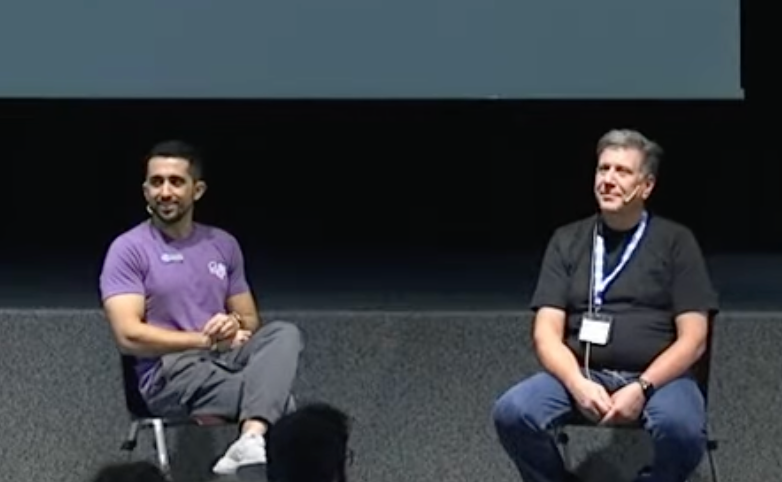
One of my teammates, Mila Zhou, is in charge of a program where we give back to open source projects in the form of AWS credits. She led the effort to host the Nix binary cache when their previous sponsor was no longer able to support it. As mentioned above a lot of AWS users use Nix so it only seemed fair (although I need to point out that our program isn’t just for the direct benefit of our customers; sometimes we sponsor projects like GNOME that more indirectly benefit them). It was fun and after the session folks came up to me with even more ideas on how we can help, such as testing Nix on CUDA infrastructure to avoid expensive errors when using GPUs.
One thing I do at conferences is when I meet interesting people is I ask if I can take a picture of their badge, and then I connect with them later on LinkedIn. I am a reluctant LinkedIn user. I find it valuable but I first rage quit them when they were doing some e-mail shenanigans back in the day, but then I found it useful enough to rejoin but I refuse to use the mobile app and just use the website, so it is harder for me to instantly connect with someone.
[Note: I’m happy to connect with folks. Just let me know if you send an invite how we know each other. I get a lot of random requests that I don’t know how to deal with, so it helps to know, even if we haven’t met, how we are related (open source, AWS, etc.)]
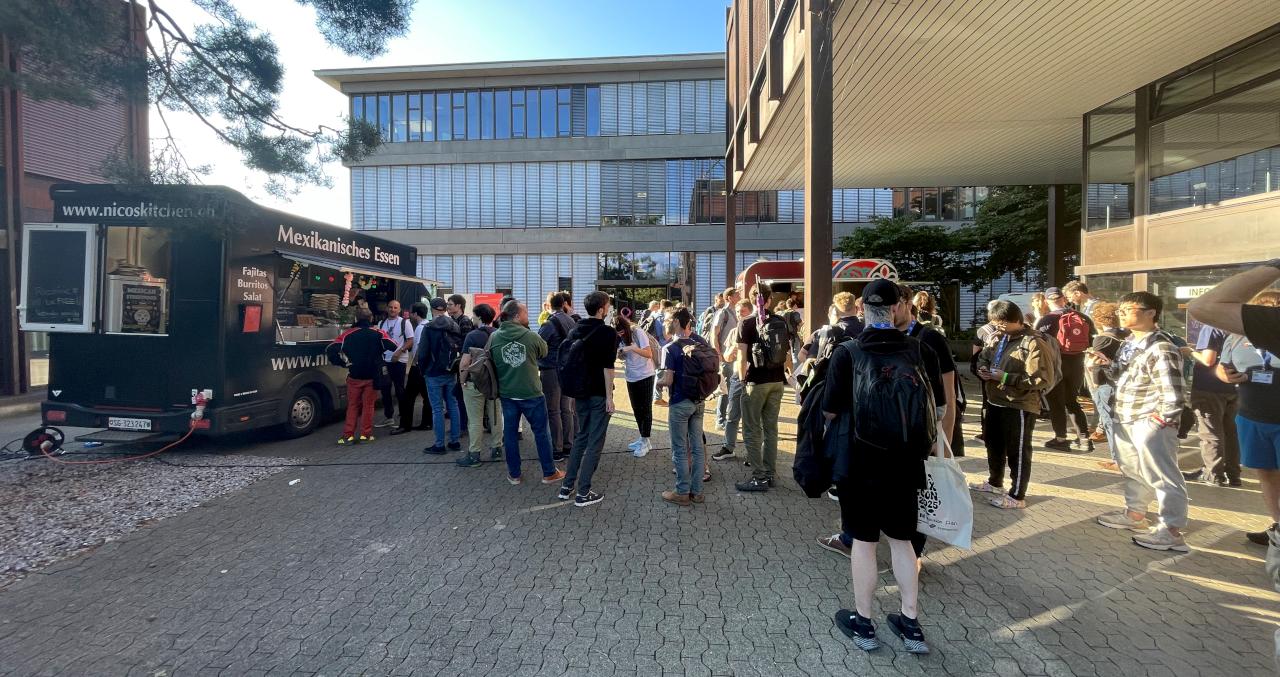
The evening meal was provided by both a food truck and a beer truck. I was supposed to go to a Flox event but ended up talking to people until well past nightfall and totally missed it (grin)
Saturday was another round of sessions and workshops.
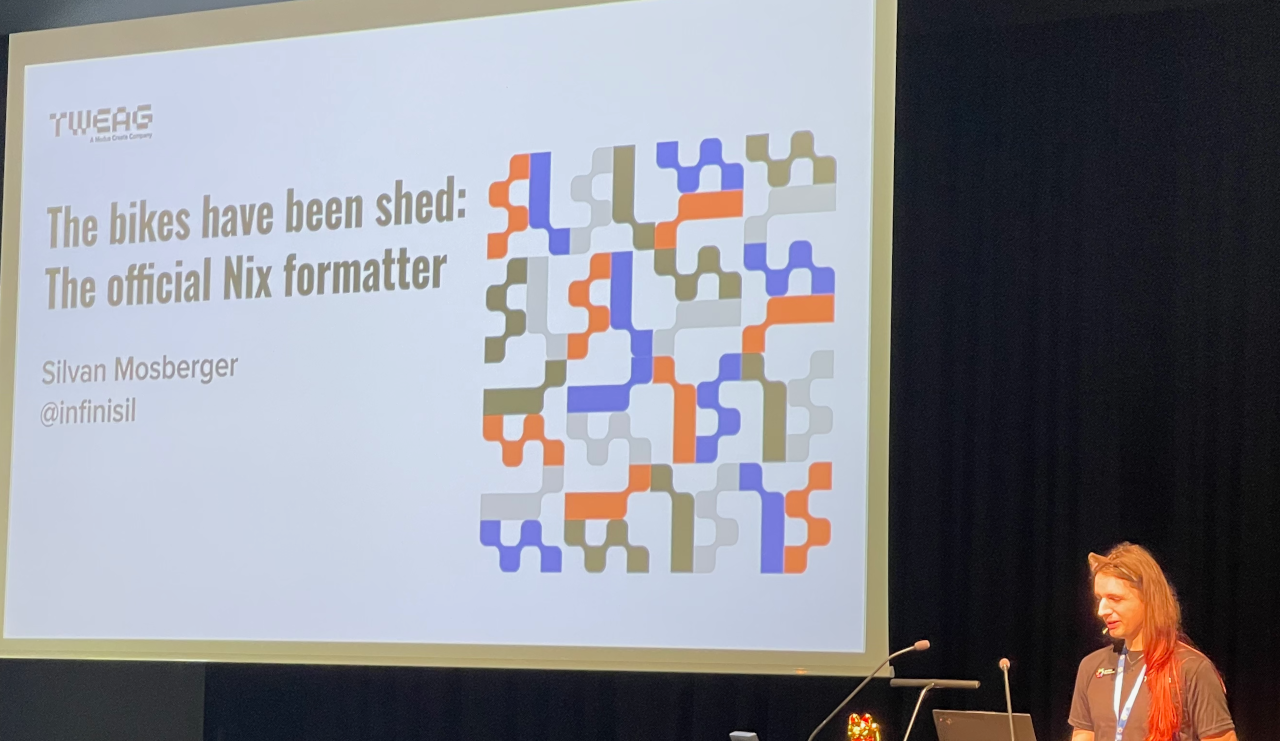
I went to one session presented by Silvan Mosberger on the official Nix formatter.
One detail that a number of projects forget is having a standard format to the code. This is even more important with a project that packages so much software like Nix. Silvan went over the history of Nix formatters ended up with the current version.
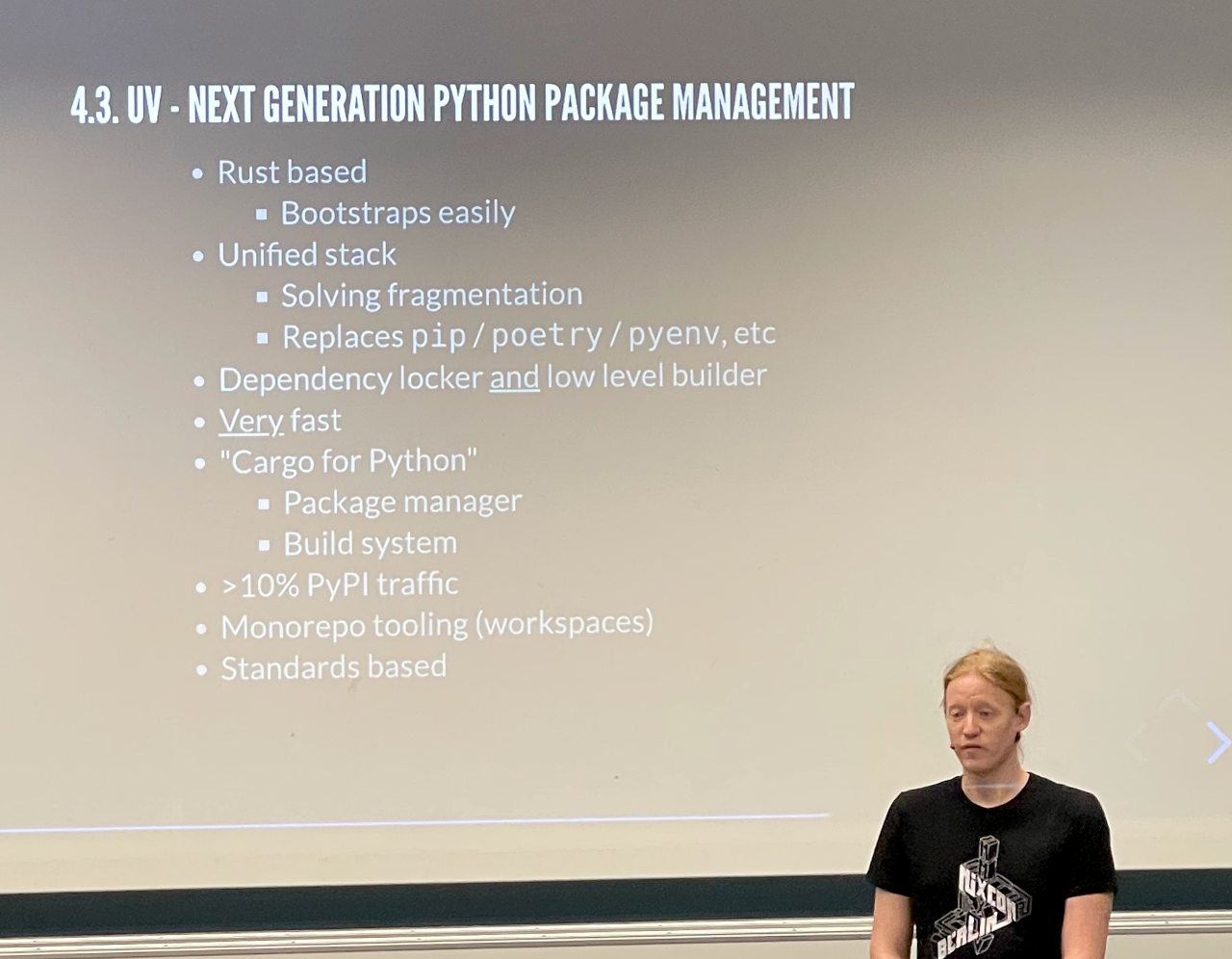
Another packaging talk involved Python. Now I am not a coder but I am trying to improve on my Python skills as the language has become extremely popular and I’m seeing it everywhere. On other operating systems one can use pip install to pretty much install a python package but how does one do it on a system like Nix? Looks like there are a number of options with the coolest one being uv (others are pretty excited about uv too).
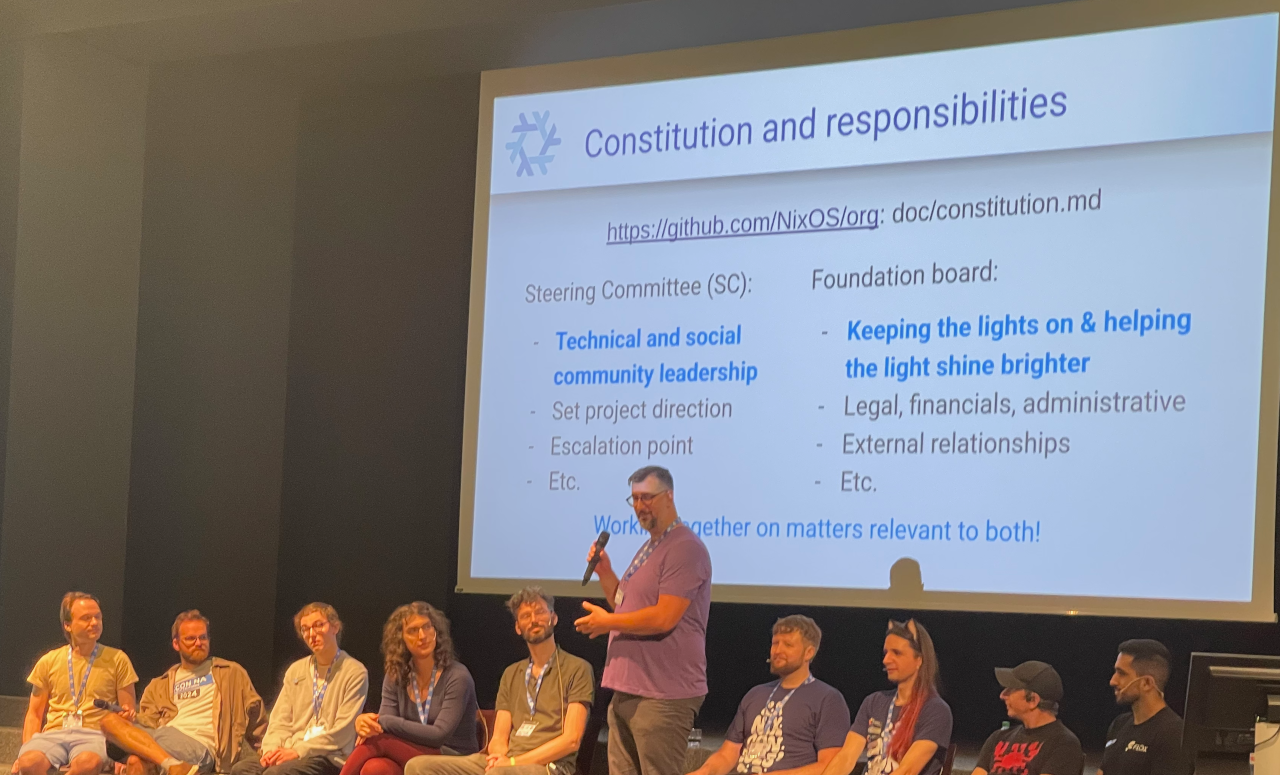
After lunch there was a good panel involving both the Steering Committee and the Foundation Board. It was cool to hear the “brain trust” of Nix answer questions about how the project is going and what’s in store for the future.
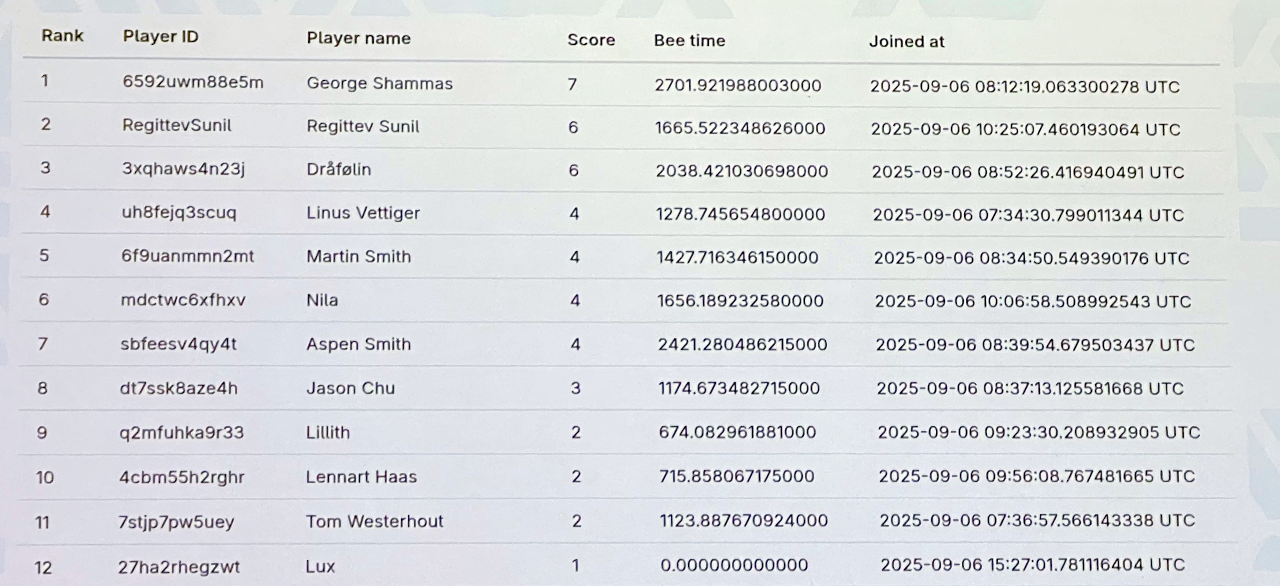
The closing presentation revealed the winner of the bee: George Shammas with seven points, although it was close with two others having swapped the bee six times.

We then went out to the lake for a group photo. I yoinked it from the NixCon website and you can find me in the back to the far right.
I didn’t participate in the Sunday Hackathon as I needed to head to Zürich proper to get ready for some other meetings, but I had a blast at the conference and plan to attend next year. If you look at the schedule page on the website almost all the talks were recorded, so if I’ve piqued your interest on any of these topic you can see it for yourself.
When I got home I installed NixOS on my personal laptop and so far I’m enjoying it, but that story is for a separate post.